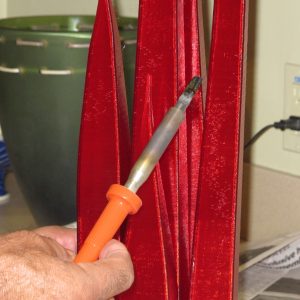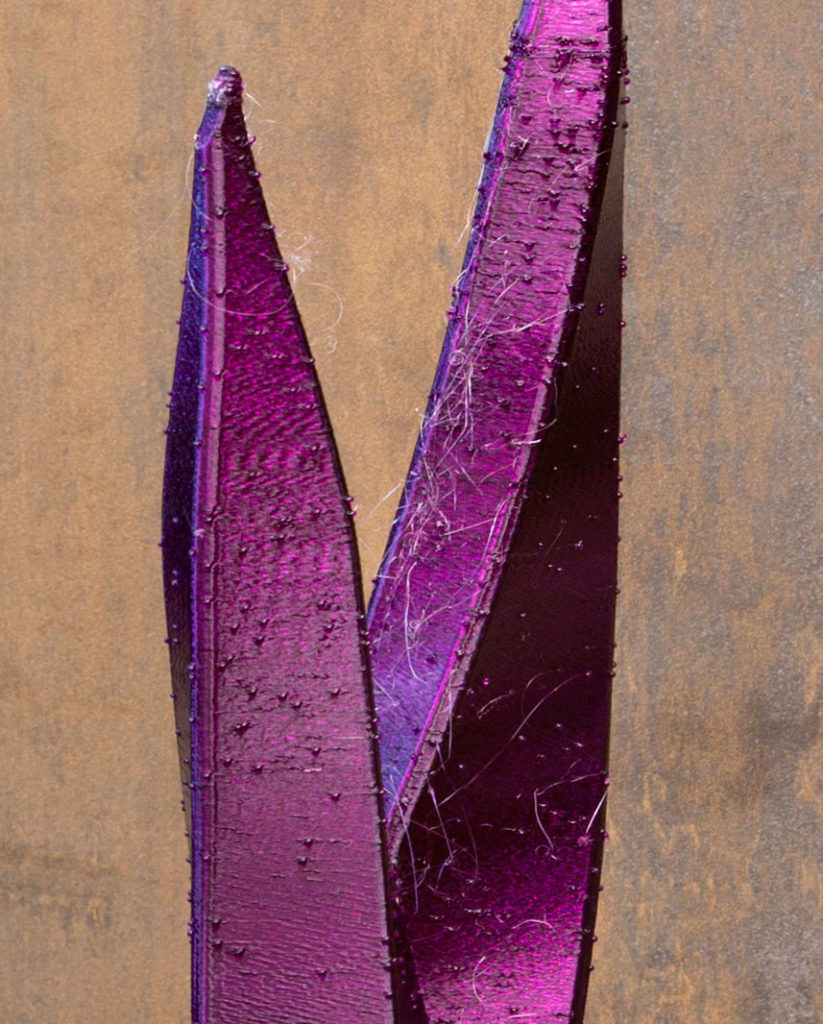Printing big sculptures on my 8-foot-tall Cerberus 3D Gigante printer is a balance of heat and cool.
As discussed in a previous post, I installed a heated bed on the printer, which helps keep the base of my large format 3D-printed sculptures adhered to the bed during the multiple days of many prints. (Some prints have taken four days. Keeping an eye on a print that long 24 hours a day, switching out spools of filament, adjusting speeds, etc., is definitely not for the faint of heart!)
As the sculptures print, though, I cool them down with fans. My fan of choice right now is a 4-foot-tall oscillating tower fan.
The cooling is especially important when the upper sections of a sculpture narrow, as many of mine do. When they narrow like that, I also turn down print speed to avoid burning on any edges.
The result is spiderweb like strings, or threads, that cool as the hotend moves. They sometimes run between sections almost like the warp, or horizontal threads, in a weaving ….
In my latest 3D-printed sculpture, Scarlet Spires, that meant there were a lot of threads between its five, tall and thin towers.
Sometimes I leave those strings, like on my sculpture Love and Marriage. It has interesting artifacts, as they are called in the art world, including some bumps caused when the printer changed levels but didn’t “sniff” the filament back in, and a series of strings, or hairs, at the top of the sculpture. Considering the subject, those flaws seemed like appropriate commentary.

I thought for a couple of days how to remove them without damaging the sculpture’s beautiful translucent red finish. Then I remembered the hot knife I made to remove supports on my ABS sculptures I made on my CubeX 3D printer.
Not wanting to chance anything, though, first I tested the approach on a failed, larger version of the same sculpture (another heartbreaking fail. The software just seemed to lose its place and quit Aaaarggh!)
I heated up the knife, which I made from an old soldering gun and a blade I made from some bar stock (right), and ran it up and down the areas where the strings attached on both sides. I ran my hand along behind it, removing any strings that remained and feeling for rough spots. Any rough spots got another visit from the hot knife.
The process was amazingly easy and effective. No one would even know there had been strings between the towers.
Once I felt confident with the process, I turned to Scarlet Spires itself and “shaved” away. I love it when something goes right!
